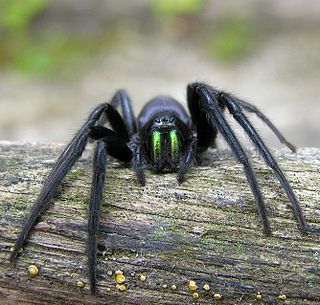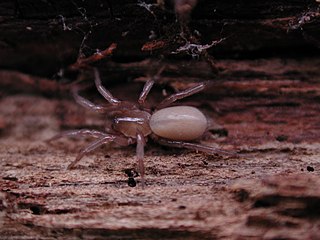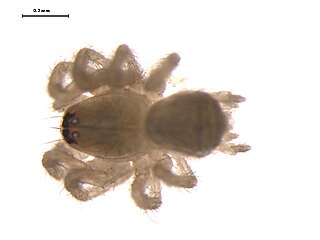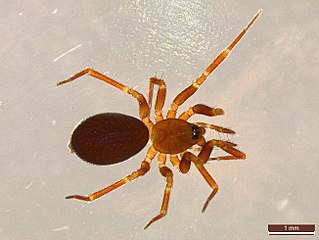
Theridiosoma is a genus of ray spiders that was first described by Octavius Pickard-Cambridge in 1879. They use their web as a high speed slingshot to actively hunt for prey.

Enoplognatha is a genus of comb-footed spiders that was first described by P. Pavesi in 1880. They have both a large colulus and a subspherical abdomen. Males usually have enlarged chelicerae. It is considered a senior synonym of Symopagia.

Segestria is a genus of tube dwelling spiders that was first described by Pierre André Latreille in 1804.

Psilochorus is a genus of spiders in the family Pholcidae.

Metepeira is a genus of orb-weaver spiders first described by F. O. Pickard-Cambridge in 1903. The name is derived from the Ancient Greek μετά and the obsolete genus name Epeira, denoting a genus similar to Epeira.

Ero is a genus of pirate spiders first described in 1836. They resemble comb-footed spiders due to their globular abdomen, which is higher than it is long.

Cicurina, also called the cave meshweaver, is a genus of dwarf sheet spiders that was first described by Anton Menge in 1871. Originally placed with the funnel weavers, it was moved to the Dictynidae in 1967, then to the Hahniidae in 2017. The name is from the Latin root "cucur-", meaning "to tame".

Dictyna is a genus of cribellate araneomorph spiders in the family Dictynidae, and was first described by Carl Jakob Sundevall in 1833.

Euryopis is a genus of comb-footed spiders that was first described by Anton Menge in 1868.
Rualena is a genus of North American funnel weavers first described by R. V. Chamberlin & Wilton Ivie in 1942.

Neoantistea is a genus of dwarf sheet spiders that was first described by Willis J. Gertsch in 1934.

Helophora is a genus of dwarf spiders that was first described by Anton Menge in 1866.

Microneta is a genus of dwarf spiders that was first described by Anton Menge in 1869.

Pityohyphantes, commonly known as hammock spiders, is a genus of sheet weavers that was first described by Eugène Louis Simon in 1929. The name comes from the Ancient Greek Πίτυς (pitys), meaning "pine", and hyphantes, meaning "weaver".

Faiditus is a genus of comb-footed spiders that was first described by Eugen von Keyserling in 1884.














